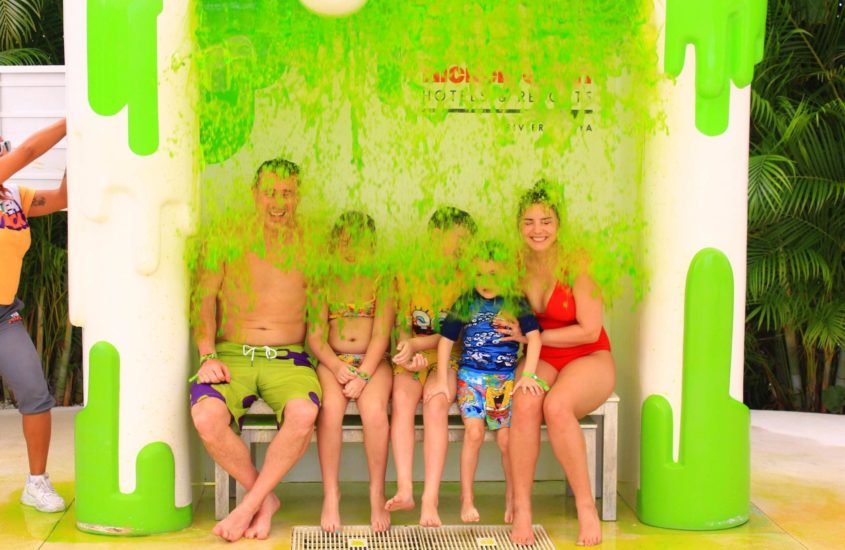The Listening Program

What would you say if I told you that you could see improvements in your autistic child just by letting them listen to music for 15 minutes, 5 days a week? Sounds too good to be true right? Well, it is not! The Listening Program (or TLP for short) is exactly that. We have been actively using TLP with our boys for 2 years now and are very happy with the program. Since we have been so pleased with TLP, we thought it was time to share the information with our Autism and Go readers. So here it is:
What is TLP?
I doubt I can describe precisely how the device functions better than the people that make it, so as stated directly from their website it uses the “highest audio quality recording technology (high-definition sound) and advanced neuro-acoustic techniques, TLP music has been acoustically modified to train your brain. It strengthens neurological pathways so you can improve your ability to learn, communicate, and process information”. On the website you can find a lot of reviews and stories on how TLP can help people, and although we use it in our house to help our boys with autism, anyone can use it. We found out about the program through our boys’ integrative doctor at Sancta Familia Center and were able to go through them to get the program and “training” on how best to use the system.
The Investment Options
Our doctor’s office offered different tiers of packages to purchase. Since we heard such great things, we wanted to get the most out of the program, so we opted to get the complete system which included 4 core programs downloaded onto an iPod, special headphones (waves bone conduction audio system), and an amplifier. Since we made our purchase a few years ago I am not going to quote any prices as I’m sure they have changed a bit since then, but I will tell you that personally we are not disappointed with having all the programs available to us as we needed them. If you do not currently go to a doctor that is familiar with the program you can go to Advanced Brain Technologies website directly to look at the options they have to participate in the TLP program.
The Schedule
Our practitioner gave us 2 schedule options, a standard of 15 minutes a day, 5 days a week or a condensed option where you could do 2 sessions back-to-back for 30 minutes a day. The condensed version gets you through each program faster so that was our preference, but we were willing to be flexible if 30minutes was too long for Damion to sit in one session.
The Implementation
We definitely didn’t know what to expect when starting the program. Damion was the first of our boys to be recommended to the program, so he started about a year ahead of Drew. At the time we started TLP, Damion had only ever used headphones to watch movies while we were traveling, and for the program to work you are not supposed to let them watch or look at devices while they are listening. They don’t have to sit still and do nothing, but it needs to be things that don’t involve their brain like TV. The example the doctor’s office gave me was coloring and then I originally thought pouring water might be a good activity to offer Damion as that was a calming exercise for him at the time. Finding a time to fit it into every weekday was another thing to think about. They didn’t advise doing the sessions too close to bedtime because it could affect their sleep, and our evenings tend to vary with after-school activities so it seemed like the best time for us to fit it in consistently would be first thing in the morning. So that was what we did. Damion definitely wasn’t a fan at first and we had to start with just the 15 minutes schedule, but we stuck with it and in a few weeks he was in a routine. Once he got comfortable, we were able to bump up to the condensed version of 30 minutes a day. And since we did it first thing in the morning, we just had him eating breakfast while listening, so we didn’t have to worry about any other type of “entertainment” during the sessions. Now it is to the point that he wants to and asks to do his TLP, which the only time we really take a break from it is when we are traveling or possibly when he is sick. Otherwise, it is a staple of our Monday-Friday routine. Since we were used to the program with Damion, it was a simple start when it was time to add Drew to the program. The only adjustment we had to make was a slightly early wake up time for Damion in the morning so there was time for both boys to get their 30 minutes in before they left for school.
The Results
I am not going to sit here and tell you that this was some sort of a cure by any means, but I will say that the results we saw were visible to both of us and some of the people that work with our boys. For Drew, we observed that he just continued to grow in his verbal communication skills. He was talking more and more, and it seemed like his processing time (although still longer than most of his peers) was really improving. For Damion we saw an increase in his attention to other peoples emotions (sometimes almost too interested, especially when kids are upset) but still an improvement from rarely paying attention to other’s emotions. We also saw language improvements for Damion. And for both boys we saw a decrease in some of their sensory issues that they struggle with, like less issues with loud noise. So, like I said, not a cure by any means, but a great way to help my boys and since it is a very easy and completely noninvasive program, it is definitely something worth trying! And although the rest of our gang hasn’t tried the program ourselves, we know that it doesn’t just work for people on the autism spectrum. It is a workout for your brain, and I hear that almost anyone that participates has seen results! So we are excited to see the other ways that this program can be helpful to the whole family.
For more information check out the Advanced Brain Technologies website.




